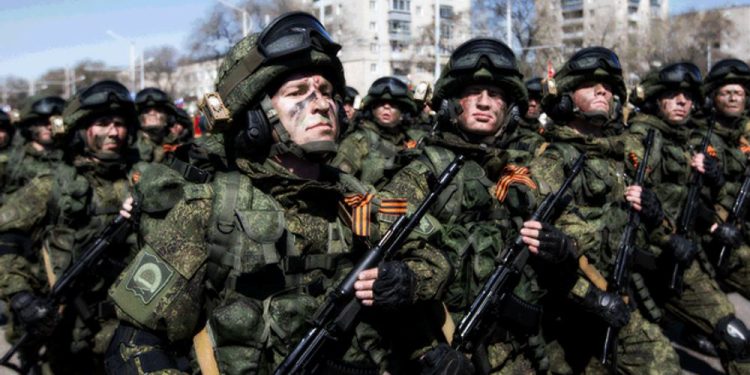(Natural News)—Russian Minister of Defense Sergei Shoigu claims that the Ukrainian military has experienced nearly 500,000 military losses since February 2022.
Speaking at a ministerial meeting, Shoigu emphasized that Russian forces currently hold the initiative on the front lines, pushing back Ukrainian troops and preventing them from maintaining defensive positions.
Addressing the United States’ planned allocation of over $60 billion in military aid to Kyiv, Shoigu expressed skepticism about its impact on the battlefield. He suggested that most of the funds would go toward U.S. military production rather than significantly altering the situation in Ukraine.
Shoigu criticized the U.S. approach, arguing that it effectively condones Ukrainian casualties in the conflict with Russia to serve American interests. “The American authorities cynically state that Ukrainians will be dying in the fight with Russia for their interests,” said Shoigu.
The long-awaited, nearly $61 billion military aid package for Ukraine has finally been passed into law by the White House following months of political back-and-forth.
Highlighting Russia’s defense production capacity and tactical flexibility, Shoigu reiterated the Defense Ministry’s commitment to conducting long-range attacks on logistics hubs and depots supplying Western weapons to Ukraine. (Related: Ukraine running out of air defense missiles, giving Russia a FREE PASS to Kyiv.)
Ukraine rarely comments on the scale of its battlefield fatalities. But in February, President Volodymyr Zelensky claimed that his country had lost 31,000 Ukrainian soldiers on the battlefield. Estimates based on U.S. intelligence indicate the losses are much higher.
Western sources claim Russian military casualties have surpassed 50,000
Meanwhile, the BBC has verified that Russia’s military casualties in Ukraine have surpassed 50,000, marking a grim milestone in the ongoing conflict. Over the past year, as Moscow implemented its aggressive “meat grinder” strategy on the front lines, the death toll surged by nearly 25 percent compared to the previous year.
Collaborating with independent media group Mediazona and volunteers, the BBC has meticulously tracked these casualties since February 2022. The investigation involved examining new graves in cemeteries and analyzing open-source data from official reports, newspapers and social media.
According to the BBC’s analysis, of the more than 50,000 alleged casualties – which is more than eight times higher than the only official public acknowledgment of fatality numbers given by the Kremlin in September 2022 – about 27,300 are confirmed deaths that occurred in the second year of combat. The BBC further claims that the actual number of Russian deaths is likely to be much higher.
Of the deaths confirmed by the BBC, 9,000 were allegedly Russian prison inmates who were recruited into the military with a promise of freedom after their service. Several thousands more were allegedly volunteers and civilians with little to no military training or experience.
The analysis also does not include the number of deaths of Russian-aligned militia units that come from the disputed territories of Donetsk and Luhansk, internationally recognized as part of eastern Ukraine.
Kremlin spokesman Dmitry Peskov, responding to the BBC‘s findings, asserted that it is the “exclusive prerogative of the Ministry of Defense” to provide information on casualties, because of laws covering state secrets and disseminating information during the Russian special military operation in Ukraine.
Learn more about the deadly conflict in Ukraine at UkraineWitness.com. Watch this video discussing the recent Russian conquest of the town of Novobakhmutivka.
This video is from The Prisoner channel on Brighteon.com.
More related stories:
- Biden regime tells Zelensky regime to stop bombing Russia’s oil refineries because it might cause global energy prices to soar.
- Russia claims to have seized the initiative in Ukraine following significant territorial gains.
- Ukraine suspends visa renewals for military-aged Ukrainians living overseas as punishment for NOT DYING in battle with Russia.
- Russia warns: Fresh aid package for Ukraine will lead to more Ukrainian casualties.
- Ukraine warns its frontlines could COLLAPSE at any time as generals fear severe losses from upcoming Russian offensive.
Sources include:





